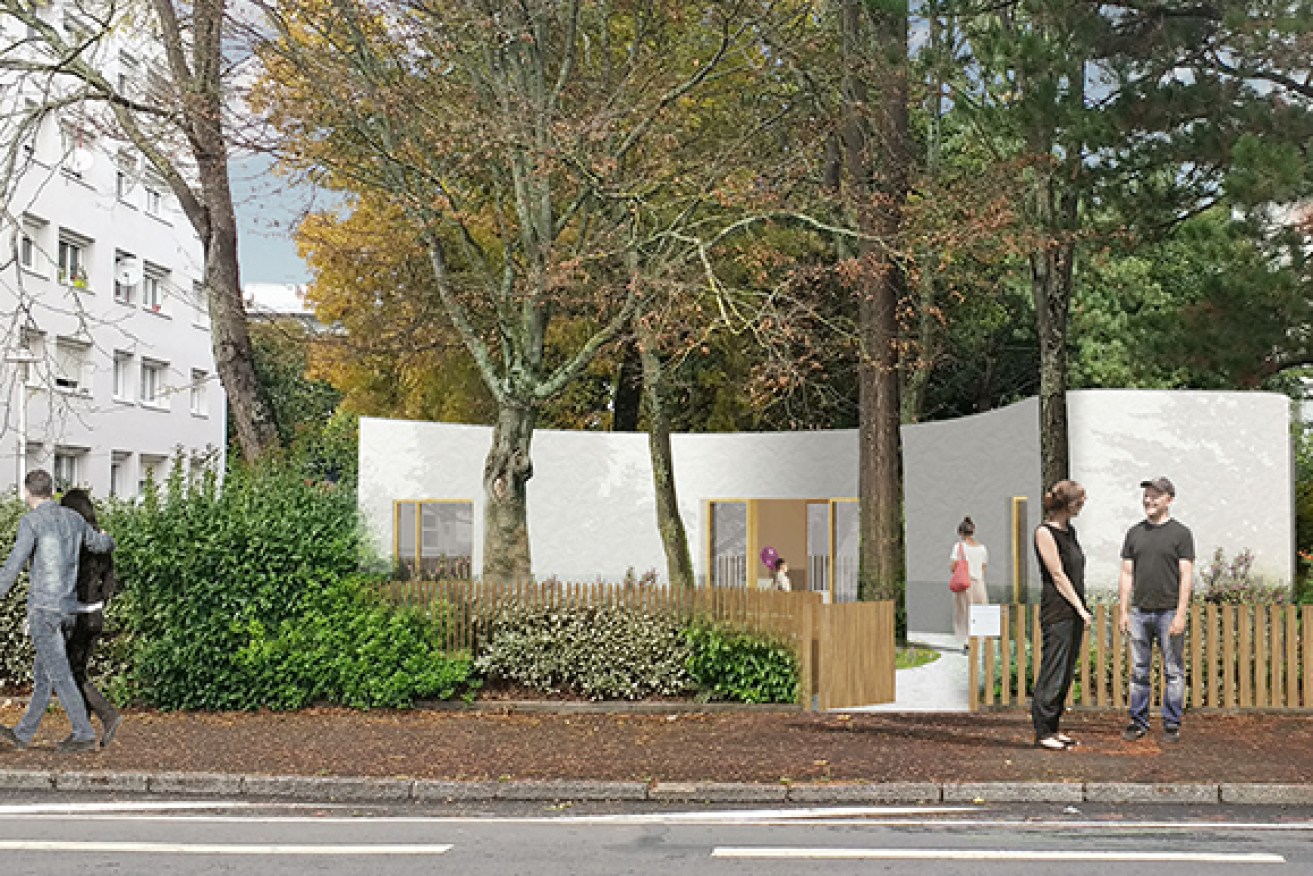French family moves into world’s first liveable 3D-printed home


A French family has moved into a 3D-printed home in Nantes, France. Photo: YHNOVA
A French family has become the first in the world to move into a fully habitable 3D-printed home, and experts say it’s just the start of a robotic building revolution.
No longer the stuff of science fiction, additive manufacturing, otherwise known as 3D printing, is increasingly being looked to as an environmentally sustainable, time and cost-saving solution for traditionally laborious and costly manufacturing and construction processes.
Designed by researchers from the University of Nantes as a social housing project in conjunction with the local council, the house took 54 hours to print and was built by a robot using a combination of a specialist plastic polymer and concrete.

Spearheaded by a team of engineers at the University of Nantes, a 3D-printing robot took 54 hours to complete the house. Photo: YouTube
The 95-square-metre house boasts highly efficient insulation, and sensors that monitor air quality, humidity and temperature.
The team behind the project hopes to transform the construction industry, making houses cheaper and more sustainable.
“Once you’ve printed it you’ve used very little material and produced zero waste,” University of Nantes Professor Benoit Furet said.
The house costs 20 per cent less than an identical house built with traditional construction methods.
“The advantage of 3D printing is that it enables us to have far richer solutions in terms of the shape of the house, much more interesting for architects than the traditional construction of straight walls,” Professor Furet told the BBC.
According to the council, the project has two aims: firstly, to see if they can make this type of construction mainstream, and secondly, to see if the same construction principles can be applied to other public buildings such as sports halls and communal buildings.
“For 2000 years there hasn’t been a change in the paradigm of the construction process. We wanted to sweep this whole construction process away,” the council’s technology lead Francky Trichet told the BBC.
Earlier this year, the Dutch town of Eindhoven revealed plans for five sustainable, 3D-printed concrete houses, with residents expected to move in as soon as next year.
3D printing in Australia
Deakin University research fellow Mazher Mohammed is at the forefront of 3D printing in Australia, pioneering ‘eco-printing‘ in the Solomon Islands by using a solar-powered 3D-printer to make plumbing parts from recycled waste plastic.
Australian researchers are leading the way in 3D printing when it comes to biomedical technology, such as 3D-printed implants and facial prosthetics. But when it comes to construction, China, the US and Europe are currently more advanced, Dr Mohammed says.
However, Dr Mohammed, who has undertaken research on the use of waste plastic for construction purposes, believes that the field will continue to progress in Australia.
“There’s an interest there to scope out wider opportunities on this front as well as developing enabling technologies through advanced design, product development and industrial design,” he said.
“With the transition from the automotive industry there’s more of a call towards advanced manufacturing: 3D printing is one program in that framework.”
Last month, Perth-based bio-technology company Mirreco revealed plans to roll out 3D-printed hemp homes, thanks to pioneering green technology that could transform residential and commercial building.
Another Perth-based technology company, Fastbrick Robotics, has also announced ambitions to revolutionise the construction industry with a world-first one-armed bricklaying robot capable of building a standard-sized home in two days.
Named ‘Hadrian X’, the Australian-built robot will be put to the test in its first outdoor build later this year.

The Hadrian X construction robot at work. Photo: Fastbrick Robotics
The one-armed robot has a 30-metre reach and is capable of working on a range of low-rise residential and commercial scale construction sites, from standard home building sites to multi-unit development.
In the right environment and working 24/7, a single machine could produce between 100 and 300 homes per year, the company said.








